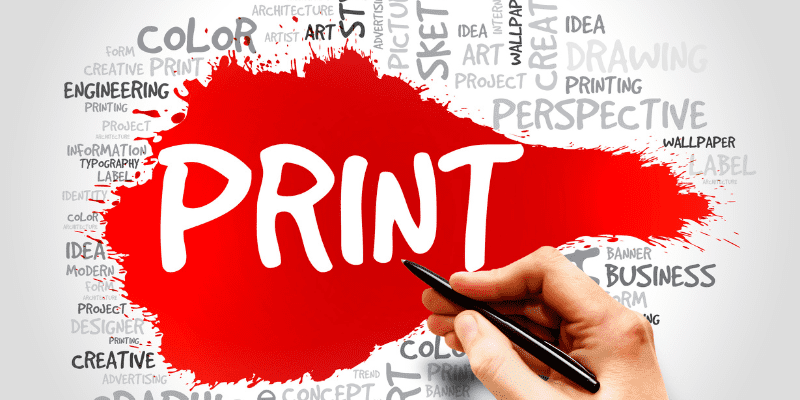
Email: [email protected]

Contact Us: 6230 Wilshire Boulevard Ste A, Los Angeles, CA 90048
Kindle Avenue Publishing 2nd Floor 2 Woodberry Grove Finchley, London N12 0DR

In today’s digital age, where e-books and online content dominate, the role of a printing book company in the USA might seem diminished. However, these companies still play a crucial role in the publishing industry, particularly in the USA and neighboring countries. From small independent publishers to large printing corporations, they are instrumental in bringing words to life on paper. So, let us learn more about the significance of printing book companies and how they provide their printing services.
The Importance of Printing Book Companies
Despite the rise of e-books and digital reading platforms, printed books continue to hold their ground. Many readers still prefer the tangible experience of holding a physical book in their hands. Printing book companies fulfill this demand by producing high-quality printed materials that cater to various genres and interests.
One of the primary roles of printing book companies is to facilitate the publication process for authors and publishers. They offer expertise in printing, binding, and finishing, ensuring that the final product meets professional standards. Additionally, these companies often provide distribution services, helping books reach retailers, libraries, and consumers across the country.
Services Provided by Printing Book Companies
Printing
Printing book companies use advanced printing technology to produce books efficiently and cost-effectively. They offer various printing methods, including offset printing and digital printing, each suited to different printing requirements.
Offset printing, ideal for large print runs, offers high-quality results and cost efficiency. Digital printing, on the other hand, is more suitable for shorter print runs and allows for customization and quick turnaround times.
Binding
Binding is an essential aspect of book production, as it affects the durability and aesthetics of the final product. Printing book companies offer different binding options, such as perfect binding, saddle stitching, and case binding. Perfect binding, commonly used for paperback books, involves gluing the pages to a cover.
Saddle stitching is a method used for booklets and magazines, where folded pages are stapled together along the spine. Case binding, typical for hardcover books, involves sewing or gluing the pages into a rigid cover.
Finishing
Finishing touches enhance the visual appeal and durability of printed books. Printing book companies offer various finishing options, including lamination, foil stamping, embossing, and spot UV coating. Lamination provides a protective layer to the cover, making it more resistant to wear and tear.
Foil stamping and embossing add decorative elements to the cover, creating a visually appealing design. Spot UV coating adds gloss and highlights specific areas of the cover or pages, adding a tactile element to the book.
Distribution
Many printing book companies offer distribution services to help publishers and authors reach their target audience. This includes warehousing, shipping, and logistics management.
By partnering with distributors and retailers, printing book companies ensure that books are readily available to consumers through online and brick-and-mortar stores.
The Process of Getting a Book Printed
The process of getting a book printed typically involves several steps:
Prepress: This stage involves preparing the digital files for printing. It includes tasks such as typesetting, layout design, color correction, and proofreading to ensure that the final print is of high quality.
Printing: Once the prepress stage is complete, the digital files are sent to the printing press. Depending on the printing method chosen, the books are printed either through offset or digital printing.
Binding: After printing, the individual pages are bound together to form the book. The type of binding chosen depends on factors such as the book’s format, page count, and budget.
Finishing: Once bound, the books undergo finishing processes to add decorative elements and enhance their durability.
Distribution: Finally, the printed books are distributed to retailers, wholesalers, and other channels for sale to consumers.
Printing book companies play a vital role in the publishing ecosystem by providing essential printing book services in the USA that bring novels from manuscript to finished product. They employ advanced printing technology and expertise in binding and finishing to produce high-quality books that meet the diverse needs of authors and publishers.
Additionally, they offer distribution services to ensure that books reach readers across the country. Despite the digital revolution, printed books continue to thrive, thanks in part to the dedication and innovation of printing book companies in the USA.
Lastly, when you want to hire a printing books company, thorough research is essential. Start by evaluating their capabilities, including printing methods, binding options, and finishing techniques. Request samples of their work to ensure quality and durability. Consider communication and collaboration, ensuring the company is responsive and transparent.
Obtain quotes, comparing costs and turnaround times. Look for excellent customer service and support, and ask for references or testimonials from past clients. By carefully assessing these factors, you can find a printing book company that meets your needs and delivers a high-quality finished product within your budget and timeline.